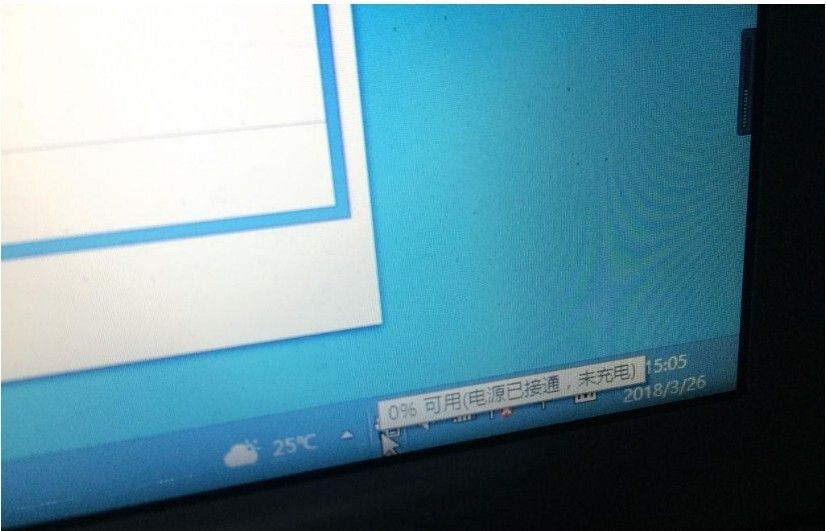table {
border-collapse: collapse;
width: 100%;
margin-bottom: 1rem;
}
th, td {
border: 1px solid #ddd;
padding: 8px;
text-align: left;
}
th {
background-color: #f2f2f2;
}
tr:nth-child(even) {
background-color: #f9f9f9;
}
pre {
background-color: #f8f8f8;
padding: 15px;
border-radius: 4px;
overflow-x: auto;
}
44、修改
CreateMultipleFolders.ps1脚本以删除C:Mytest目录中的10个文件夹,步骤如下:1. 在Windows PowerShell ISE中打开
CreateMultipleFolders.ps1脚本。2. 将If…Else语句中的New – Item cmdlet改为Remove – Item cmdlet。3. 移除Remove – Item cmdlet中的 – name参数,用反斜杠替换。4. 移除Remove – Item cmdlet中的 – type参数。5. 将脚本保存为
DeleteMultipleFolders.ps1并运行。
按照以下步骤修改
<yourname>CreateMultipleFolders.ps1
脚本以删除
C:Mytest
目录中的10个文件夹:
在Windows PowerShell ISE中打开
<yourname>CreateMultipleFolders.ps1
脚本。
将
If...Else
语句中的
New-Item
cmdlet改为
Remove-Item
cmdlet,修改后脚本块为:
powershell
{
$intPad = 0;
Remove-Item -path c:mytest -name $strPrefix$intPad$i -type directory
}
else
{
Remove-Item -path c:mytest -name $strPrefix$i -type directory
}
移除
Remove-Item
cmdlet中的
-name
参数,用反斜杠替换,修改后脚本块为:
powershell
{
$intPad = 0;
Remove-Item -path c:mytest$strPrefix$intPad$i -type directory
}
else
{
Remove-Item -path c:mytest$strPrefix$i -type directory
}
移除
Remove-Item
cmdlet中的
-type
参数,修改后脚本块为:
powershell
{
$intPad = 0;
Remove-Item -path c:mytest$strPrefix$intPad$i
}
else
{
Remove-Item -path c:mytest$strPrefix$i
}
将脚本保存为
<yourname>DeleteMultipleFolders.ps1
并运行。
45、启动 Windows PowerShell ISE。使用 Get-Verb cmdlet 获取已批准的动词列表。选择一个适合用于按最后修改日期获取文件列表的函数的动词。创建一个名为 Get-FilesByDate 的新函数。为该函数添加四个命令行参数。第一个参数是文件类型数组,第二个参数是月份,第三个参数是年份,最后一个参数是文件路径数组。在函数的 Param 部分之后,添加代码以对通过 $path 变量提供的路径进行递归搜索。将搜索范围限制为仅包含通过 $filetypes 变量提供的文件类型。添加一个 Where-Object 子句,将返回的文件限制为 lastwritetime 属性的月份等于通过命令行提供的月份,且年份等于通过命令行提供的年份。将该函数保存到一个名为 Get-FilesByDate.ps1 的 .ps1 文件中。在 Windows PowerShell ISE 中运行包含该函数的脚本。在命令窗格中调用该函数并为其提供适当的参数。
以下是完成上述任务的详细步骤:
启动 Windows PowerShell ISE。
使用
Get-Verb
cmdlet 获取已批准的动词列表:
powershell
Get-Verb
从列表中选择“Get”作为适合按最后修改日期获取文件列表的动词。
创建名为
Get-FilesByDate
的新函数,并添加四个命令行参数:
powershell
Function Get-FilesByDate {
Param(
[string[]]$fileTypes,
[int]$month,
[int]$year,
[string[]]$path
)
Get-ChildItem -Path $path -Include $fileTypes -Recurse | Where-Object {
$_.LastWriteTime.Month -eq $month -and $_.LastWriteTime.Year -eq $year
}
} # end function Get-FilesByDate
将函数保存到名为
Get-FilesByDate.ps1
的
.ps1
文件中。
在 Windows PowerShell ISE 中运行包含该函数的脚本。
在命令窗格中调用该函数并提供适当的参数,例如:
powershell
Get-FilesByDate -fileTypes *.docx -month 5 -year 2012 -path c:data
46、启动 Windows PowerShell ISE。打开之前练习中创建的 Get – FilesByDate.ps1 脚本,并使用 Windows PowerShell ISE 的“另存为”功能将文件另存为 Get – FilesByDateV2.ps1。为 $filetypes 输入变量创建一个默认文件类型数组,并将该数组赋值给 $filetypes 输入变量,创建数组时使用数组表示法。使用 [Parameter(Mandatory=$true)] 参数标签使 $month 参数成为必需参数,对 $year 和 $path 参数也执行相同操作。保存并运行该函数。在不指定路径值的情况下调用该函数。现在运行该函数并指定路径值。现在运行该函数并查找不同的文件类型。
启动 Windows PowerShell ISE。
打开
Get-FilesByDate.ps1
脚本,使用“另存为”功能将其保存为
Get-FilesByDateV2.ps1
。
创建默认文件类型数组并赋值给
$filetypes
变量,示例命令:
powershell
[string[]]$fileTypes = @("*.doc","*.docx")
使
$month
、
$year
和
$path
参数成为必需参数,示例代码:
powershell
[Parameter(Mandatory=$true)][int]$month,
[Parameter(Mandatory=$true)][int]$year,
[Parameter(Mandatory=$true)][string[]]$path
保存并运行函数。
不指定路径值调用函数,示例命令:
powershell
Get-FilesByDate -month 10 -year 2011
指定路径值运行函数,示例命令:
powershell
Get-FilesByDate -month 10 -year 2011 -path c:data
查找不同文件类型,示例命令:
powershell
Get-FilesByDate -month 10 -year 2011 -path c:data -fileTypes *.xlsx,*.xls
47、使用Get-Help获取有关导入函数的信息。
可以使用
Get-Help
后接函数名的方式来获取该函数的相关信息。
例如,若要获取
Get-ComputerInfo
函数的信息,可输入:
Get-Help Get-ComputerInfo
它会显示函数的名称、概要、语法、描述、相关链接和备注等内容。
若要查看示例,可输入:
Get-Help Get-ComputerInfo -examples
若要获取更详细信息,可输入:
Get-Help Get-ComputerInfo -detailed
若要获取技术信息,可输入:
Get-Help Get-ComputerInfo -full
48、Use the functions like you would use any other cmdlet.
像使用其他任何 cmdlet 一样使用这些函数。
49、启动 Windows PowerShell ISE。
在不同系统上启动 Windows PowerShell ISE 有不同方法:
在 Windows Server 2012 的开始页面,可输入
PowerShell
,
Windows PowerShell
和
Windows PowerShell ISE
会作为搜索结果出现;
在 Windows 8 系统,必须输入
PowerShell_ISE
才能找到
Windows PowerShell ISE
;
也可以右键单击
Windows PowerShell
图标,从出现的任务菜单中选择
Windows PowerShell ISE
或 “以管理员身份运行 ISE” 来启动;
此外,在 Windows PowerShell 控制台内,只需输入
ise
即可启动。
50、使用 Windows PowerShell ISE 中的 cmdlet(高级函数)代码段为高级函数创建基本框架。
首先启动 Windows PowerShell ISE,然后使用其中的
cmdlet
(高级函数)代码段来创建高级函数的基本框架。
51、将基于注释的帮助从函数体外部移动到函数体内部。
# function Verb - Noun
<#
.Synopsis
简短描述
.DESCRIPTION
详细描述
.EXAMPLE
使用此 cmdlet 的示例
.EXAMPLE
使用此 cmdlet 的另一个示例
#>
52、添加 #requires 语句并要求 Windows PowerShell 版本为 3.0。
在脚本的开头添加语句:#requires -Version 3.0 。
53、将参数名称修改为 computername。添加一个别名属性,其值为 cn。配置 ValueFromPipeline 和 ParameterSetName 的参数属性。将 computername 参数限制为字符串类型。
Param (
# name of remote computer
[Alias("cn")]
[Parameter(ValueFromPipeline=$true, ParameterSetName="remote")]
[string] $ComputerName
)
54、添加一个 Switch 语句来计算 $PSCmdlet.ParameterSetName。如果 ParameterSetName 等于“remote”,使用 Get – CimInstance 命令的 -ClassName 和 -ComputerName 参数。默认情况下,在不使用 -ComputerName 参数的情况下查询 Get – CimInstance 命令。
Switch ($PSCmdlet.ParameterSetName) {
'remote' {
Get-CimInstance -ClassName Win32_BIOS -ComputerName $ComputerName
}
default {
Get-CimInstance -ClassName Win32_BIOS
}
} #end switch
55、在Windows PowerShell ISE中运行函数的操作方法是什么?
可按F5键运行整个脚本;若要运行脚本的特定部分,可选中该部分并按F8键运行。
56、在命令面板中,不带参数调用 Get – MyBios 函数。
你应该会收到本地计算机的 BIOS 信息。
57、现在使用 -cn 别名和远程计算机的名称调用 Get – MyBios 函数。
你应该会收到来自远程计算机的 BIOS 信息,示例命令如:
Get-MyBios -cn remoteComputer
其中
remoteComputer
为远程计算机名称。
58、使用帮助并查看高级函数 Get-MyBios 的完整帮助信息。
help Get-MyBios -full
59、打开你在上一个练习中创建的 Get – MyBios.ps1 文件,并将其内容复制到一个空的 Windows PowerShell ISE 脚本窗格中。
打开你在上一个练习中创建的
Get-MyBios.ps1
文件,并将其内容复制到一个空的 Windows PowerShell ISE 脚本窗格中。
60、通过指定.psm1文件扩展名,将新复制的代码保存为一个模块。将你的文件命名为mybios.psm1。从文件菜单中选择“另存为”选项,并将文件保存到一个方便的位置。
在Windows PowerShell ISE中,把复制到空脚本窗格的代码:
从文件菜单选择“另存为”
指定文件扩展名为
.psm1
文件名设为
mybios.psm1
选择合适位置保存
61、在你的 mybios.psm1 文件中,在 Get – MyBios 函数的脚本块结束后,使用 New – Alias cmdlet 创建一个名为 gmb 的新别名。将此别名的值设置为 Get – MyBios。
在
mybios.psm1
文件里,于
Get-MyBios
函数脚本块结束的位置之后,添加命令:
New-Alias -Name gmb -Value Get-MyBios
来创建别名。
62、将 Export – ModuleMember cmdlet 添加到脚本中,以从 mybios 模块导出所有别名和函数。
在脚本中添加如下命令:
Export-ModuleMember -Function * -Alias *
63、使用 Copy – Modules 脚本在当前用户的目录中创建一个名为 mybios 的模块文件夹,并将模块复制到该位置,请写出具体的操作步骤。
由于不清楚
Copy-Modules
脚本的具体调用方式和环境,以下是通用的思路步骤示例(假设在类 Unix 系统中):
打开终端。
运行
Copy-Modules
脚本,可能的命令格式如下(具体根据脚本实际情况):
bash
./Copy-Modules mybios $HOME/mybios
这里假设脚本接收两个参数,第一个是模块名称,第二个是目标路径。
如果是在 Windows 系统中,可能要在命令提示符或 PowerShell 中运行脚本,命令格式和调用方式会有所不同。实际操作时要根据
Copy-Modules
脚本的具体要求来执行。
64、打开 Windows PowerShell 控制台并使用 Import – Module cmdlet 导入 mybios 模块。
打开 Windows PowerShell 控制台后,在控制台中输入命令:
Import-Module mybios
即可导入
mybios
模块。
65、使用Get – MyBios高级函数返回当前计算机的BIOS信息。
在命令面板中,不带任何参数调用
Get-MyBios
函数,即执行
Get-MyBios
命令,便可获取本地计算机的 BIOS 信息。
66、使用帮助函数从高级函数中检索完整的帮助信息。
help Get-MyBios -full
67、使用Commands附加组件探索与WMI相关的cmdlet,具体步骤如下:1. 启动Windows PowerShell ISE。2. 使用Commands附加组件搜索与WMI相关的cmdlet。3. 从列表中选择Invoke – WmiMethod cmdlet。4. 在类块中,添加WMI类名Win32_Process。5. 在名称块中,输入方法名create。6. 在参数列表中,输入notepad。7. 点击运行按钮。8. 修改ArgumentList块,通过在参数列表中添加calc,使用分号分隔参数。9. 再次点击运行按钮以执行修订后的命令。10. 在Commands附加组件中,查找名称中包含process的cmdlet。从cmdlet列表中选择Stop – Process cmdlet。11. 在Stop – Process块的参数中选择名称参数集。12. 在名称框中,输入notepad和calc。13. 点击运行按钮以执行命令。14. 在显示与进程相关的cmdlet的名称块下,选择Get – Process cmdlet。15. 在名称参数集中,输入calc, notepad。16. 点击运行按钮以执行命令。
启动Windows PowerShell ISE。
利用Commands附加组件搜索与WMI相关的cmdlet。
从搜索结果列表里选择
Invoke-WmiMethod
cmdlet。
在类块处添加WMI类名
Win32_Process
。
在名称块输入方法名
Create
。
在参数列表输入
notepad
。
点击运行按钮。
对
ArgumentList
块进行修改,在参数列表添加
calc
,用分号分隔参数。
再次点击运行按钮执行修订后的命令。
在Commands附加组件中查找名称含
process
的cmdlet,选择
Stop-Process
cmdlet。
在
Stop-Process
块的参数中选择名称参数集。
在名称框输入
notepad
和
calc
。
点击运行按钮执行命令。
在显示与进程相关cmdlet的名称块下选择
Get-Process
cmdlet。
在名称参数集中输入
calc
,
notepad
。
点击运行按钮执行命令。
68、使用Windows PowerShell ISE代码片段简化脚本创建,具体步骤如下:1. 启动Windows PowerShell ISE。2. 关闭Commands附加组件。3. 显示脚本窗格。4. 使用Get – WmiObject cmdlet从本地主机检索进程对象列表。将返回的进程对象存储在名为$process的变量中。5. 使用foreach代码片段遍历存储在$process变量中的进程对象集合。6. 将foreach代码片段中的$collection变量更改为$process。7. 在foreach代码片段的脚本块内,使用$item变量显示每个进程对象的名称。8. 点击工具栏上的绿色三角形或按F5运行代码。
以下是按照步骤操作的详细说明:
启动 Windows PowerShell ISE。
关闭 Commands 附加组件。
显示脚本窗格。
在脚本窗格中输入命令:
powershell
$process = Get-WmiObject -Class win32_process
输入时可利用 IntelliSense,如输入
Get-Wm
后按 Enter 选择
Get-WmiObject
cmdlet,输入
-c
后按 Enter 选择
-class
参数。
按 Ctrl + J 启动代码片段,待片段列表出现后,输入
f
快速移至 “F” 部分,可继续输入
fore
后按 Enter 添加
foreach
代码片段,也可在 “F” 部分使用向下箭头选择。代码片段如下:
powershell
foreach ($item in $collection)
{
}
使用鼠标双击代码第 1 行的
$process
变量(仅选中变量名的名词部分,不选美元符号),按 Ctrl + C 复制,再双击
$collection
,按 Ctrl + V 粘贴,修改后的代码如下:
powershell
foreach ($item in $process)
{
}
在
foreach
代码片段的脚本块内输入
$item.name
。
点击工具栏上的绿色三角形或按 F5 运行代码,输出应列出系统中每个进程的名称。
完整代码如下:
$process = Get-WmiObject -Class win32_process
foreach ($item in $process)
{
$item.name
}
69、在创建基本Windows PowerShell配置文件的过程中,概括其操作步骤。
启动 Windows PowerShell 控制台。
使用
Test-Path $PROFILE
确定配置文件是否存在。
若配置文件存在,使用
Copy-Item $profile c:fsoprofileBackUp.ps1
创建备份。
使用
Remove-Item $PROFILE
删除现有配置文件。
使用
Test-Path $PROFILE
确保文件已删除。
使用
New-Item $PROFILE -ItemType file -Force
创建新配置文件。
使用
ise $profile
在 Windows PowerShell ISE 中打开配置文件。
创建名为
Set-Profile
的函数用于在 ISE 中打开配置文件编辑。
向
Set-Profile
函数添加
ise $profile
代码。
使用
Save
保存修改并关闭 Windows PowerShell ISE。
关闭 Windows PowerShell 控制台。
打开控制台查找错误。
输入
Set-Profile
测试该函数。
70、描述在添加配置文件功能时,从启动控制台到测试新功能的一系列操作步骤,并按先后顺序总结。
启动 Windows PowerShell 控制台。
调用
Set-Profile
函数(命令:
Set-Profile
)。
在配置文件顶部添加四个部分注释(
#Variables
#Aliases
#PS drives
#Functions
)。
创建三个新变量(
MyDocuments
、
ConsoleProfile
、
ISEProfile
)并赋值。
创建两个新别名(
gh
引用
Get-Help
,
i
引用
Invoke-History
)。
创建两个新 PS 驱动器(
HKCR
引用注册表
HKEY_CLASSES_ROOT
,
mycerts
引用当前用户
my
位置)。
在
Set-Profile
函数后添加命令注释(
#commands
)。
添加三个命令(启动转录、设置工作位置到 C 盘根目录、清除控制台)。
保存配置文件,关闭 ISE 和控制台,重新打开控制台查错,测试新功能(命令:
gh
、
$MyDocuments
、
$ConsoleProfile
、
$ISEProfile
、
sl hkcr:
、
sl mycerts:
、
sl c:
、
Stop-Transcript
、
set-profile
)。
相关文章










